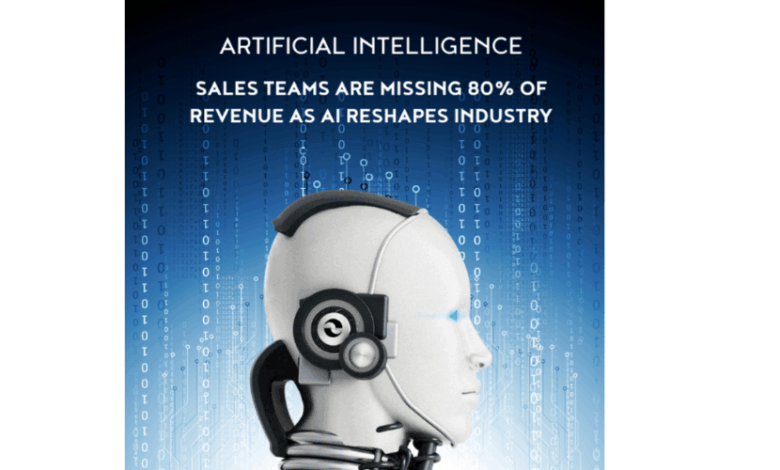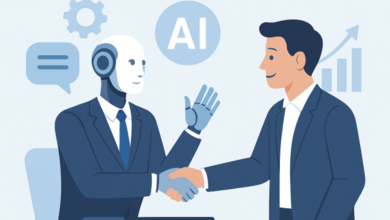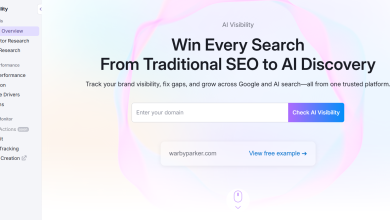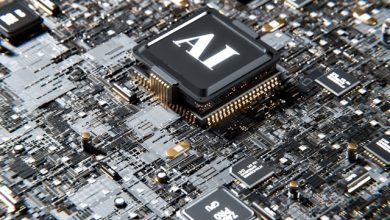
In 2014, standing on a Manhattan street corner frantically waving at occupied taxis while running late to a crucial meeting was an accepted part of doing business. The inefficiency was so normalized that we built entire buffer periods into our schedules just to accommodate the unpredictability of urban transportation.
Then Uber arrived, and within 18 months, that same street corner experience felt as antiquated as using a rotary phone.
Today, B2B sales is experiencing its identical inflection point. And if you’re in sales leadership, your response to this moment will likely define the trajectory of your career for the next decade.
The Crisis in Sales Performance
While sales leaders focus on their active opportunities, a staggering reality lurks beneath the surface. The average sales representative manages large territories but actively works only a fraction of them, creating what industry experts call “coverage black holes” that leave millions in revenue opportunities invisible and untapped.
B2B sales organizations face what researchers term a “strategic intelligence crisis.” This creates a vicious cycle: while sales reps focus on the accounts they know best, hidden opportunities in neglected territories go to competitors who happen to be paying attention at the right moment.
The numbers tell a stark story. Only 28% of sales professionals believe their teams will hit 100% of their quota this year, a number that has been steadily declining for three years.
The AI Performance Divide
The early adoption data reveals a performance chasm that’s expanding rapidly. According to Salesforce research, 83% of sales teams with AI saw revenue growth in the past year versus 66% of teams without AI. This 17-percentage-point gap represents the difference between market leadership and competitive irrelevance.
Organizations implementing AI Sales Intelligence are seeing transformational results: 80% of sales reps say it’s easy to get the customer insights they need to close deals versus 54% without AI, with deal velocity 38% faster and a 45% increase in seller efficiency through AI smart prioritization.
The Intelligence Gap
The fundamental issue isn’t effort or capability—it’s an intelligence crisis. 69% of buyers do not reach out to sellers until they are nearly 70% of the way through their buying journey, and 85% have already established purchase requirements before vendor engagement.
While sales representatives spend significant time manually researching accounts, hundreds of other accounts in their territory are experiencing the exact triggers that indicate buying intent: executive changes, technology stack shifts, regulatory pressures, merger activity, and competitive threats. The human capacity to monitor these signals across large territories is fundamentally insufficient for modern sales complexity.
The Uber Parallel: Complete Systemic Transformation
The comparison to Uber’s transportation revolution isn’t hyperbolic—it’s structural. Both industries faced the same fundamental challenge: massive inefficiency caused by information asymmetry and coordination failures.
Pre-Uber transportation suffered from three critical gaps:
- Visibility gap: No real-time awareness of available resources
- Coordination gap: Manual, inefficient matching of supply and demand
- Intelligence gap: No predictive insights about demand patterns
These are precisely the same gaps plaguing sales today. Static territories lead to unequal opportunities, prioritization problems, and coverage black holes, creating misallocated sales quota capacity causing gaps in market coverage and missed revenue.
Just as Uber didn’t just improve taxis but reimagined transportation infrastructure, AI Sales Intelligence isn’t improving traditional sales—it’s reimagining revenue generation infrastructure entirely.
Beyond Copilot: The Autonomous Revolution
Here’s where most organizations get it wrong. They treat AI like a smarter taxi dispatcher—a copilot that helps with individual tasks but still requires constant human direction. That’s not transformation; that’s automation with extra steps.
The real revolution happens when AI moves from copilot to autonomous orchestration. Instead of helping salespeople work harder on the same broken processes, truly transformative AI Sales Intelligence operates like Uber’s entire ecosystem: continuously monitoring market conditions, automatically routing opportunities to the right resources, and orchestrating complex workflows without human intervention.
Consider the difference: A copilot AI might help you write a better email to one prospect. An autonomous AI Sales Intelligence platform monitors your entire territory 24/7, identifies when companies enter buying cycles, maps stakeholder changes, prioritizes opportunities by likelihood and value, and automatically orchestrates multi-touch engagement sequences—all while you sleep.
This autonomous orchestration is what creates the performance gaps we’re seeing. While teams using AI copilots see modest improvements, teams with autonomous AI workflows are operating in entirely different competitive landscapes.
Autonomous Monitoring: AI systems continuously monitor thousands of data sources across entire territories, identifying buying signals and stakeholder changes as they occur—not when salespeople remember to check.
Predictive Orchestration: AI anticipates which accounts will require attention and when, automatically prioritizing opportunities based on likelihood to convert and deal size potential—no manual territory planning required.
Intelligent Coordination: AI orchestrates the entire go-to-market motion, connecting the right sellers with the right opportunities at the optimal moment—without constant human management.
This isn’t about making salespeople better at their current jobs. It’s about reimagining what the job of selling becomes when artificial intelligence handles the operational complexity.
The Adoption Reality
Despite clear benefits, most organizations remain stuck in copilot thinking. Only 39% of sellers are currently using AI to create efficiencies in their sales process, and many of those are using basic automation tools rather than autonomous orchestration platforms.
The skills gap compounds the problem: 53% of sales professionals say they do not know how to get the most value from generative AI at work. But the real issue isn’t training—it’s architectural. Organizations trying to retrofit AI capabilities onto existing processes are missing the point entirely.
Meanwhile, early adopters who’ve embraced autonomous AI workflows are pulling ahead dramatically. High-performing sellers are 4.1x more likely than others to utilize sales intelligence tools, and top performers generate 2.7x better conversion rates than average sales reps.
The Competitive Reality
Organizations still relying on traditional sales methods—or even basic AI copilots—face the same fate as taxi companies that ignored ride-sharing: gradual irrelevance. 78% of organizations use AI in at least one business function, but most are implementing reactive tools rather than proactive revenue generation platforms.
The early movers aren’t just winning more deals; they’re competing in entirely different opportunity pools, identifying prospects 6-12 months before they become visible to traditional sales methods by detecting early signals that human representatives cannot monitor at scale.
They’ve moved beyond the taxi model entirely. While their competitors are still waving their arms on street corners, these organizations have built autonomous revenue generation platforms that work continuously, intelligently, and at scale.
The Inevitable Future
The revenue revolution isn’t coming. It’s here. And like every revolution, it will be swift, decisive, and unforgiving to those who recognize it too late.
Your career, your quota, and your competitive position depend on whether you embrace autonomous AI workflows or remain trapped in the copilot mindset. The choice isn’t between AI and no AI—it’s between autonomous orchestration and manual management.
The organizations that will dominate the next decade won’t be those with the best salespeople or the most advanced copilot tools. They’ll be those with unified, proactive, surgical revenue generation platforms—platforms that work for the sales organization rather than requiring the sales organization to work for them.
These platforms possess the scale and capabilities that simply don’t exist in people: the ability to monitor hundreds of accounts simultaneously, process thousands of signals in real-time, and orchestrate complex engagement sequences across multiple channels and stakeholders. They operate with precision, consistency, and intelligence that no human team can match.
The window for this transformation is narrow. While you’re deciding whether autonomous AI workflows sound interesting, your competitors are already using them to identify the next opportunity in your territory.
Choose wisely. The autonomous revenue platform is already running.
The choice is binary, the timeline is compressed, and the consequences are permanent.





